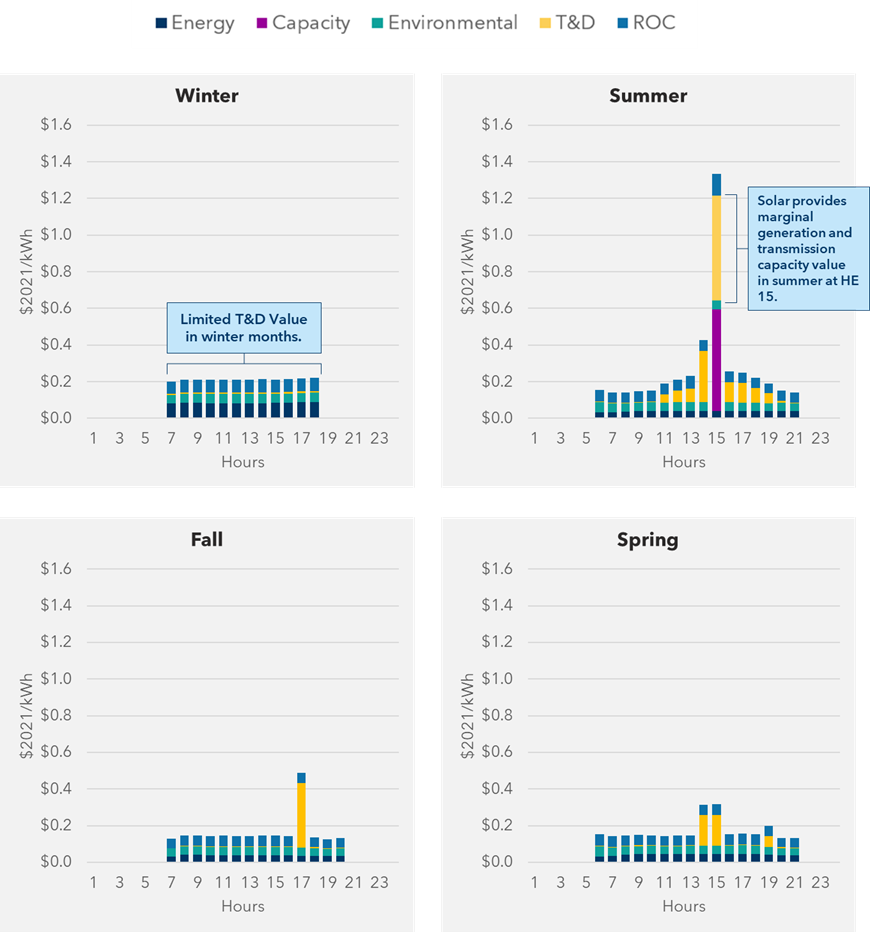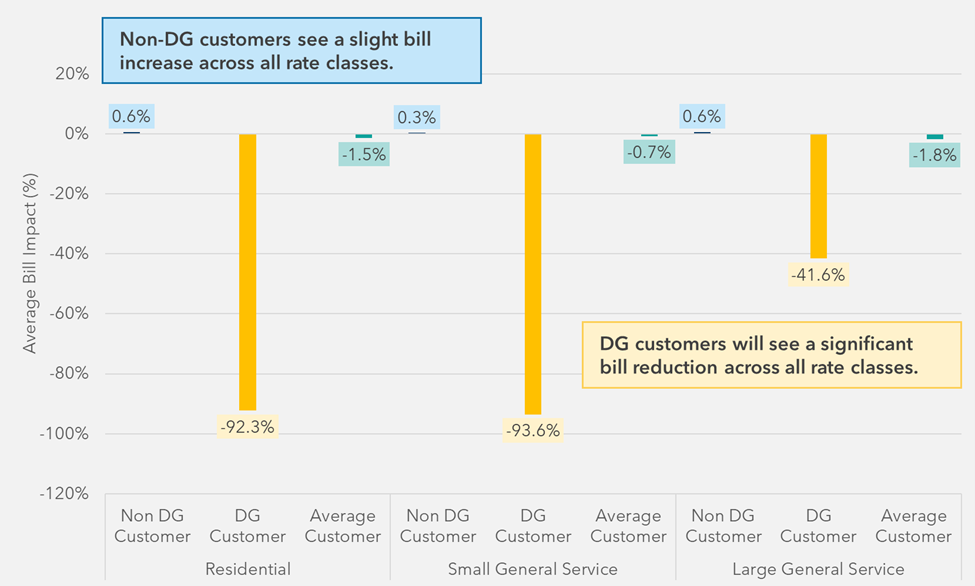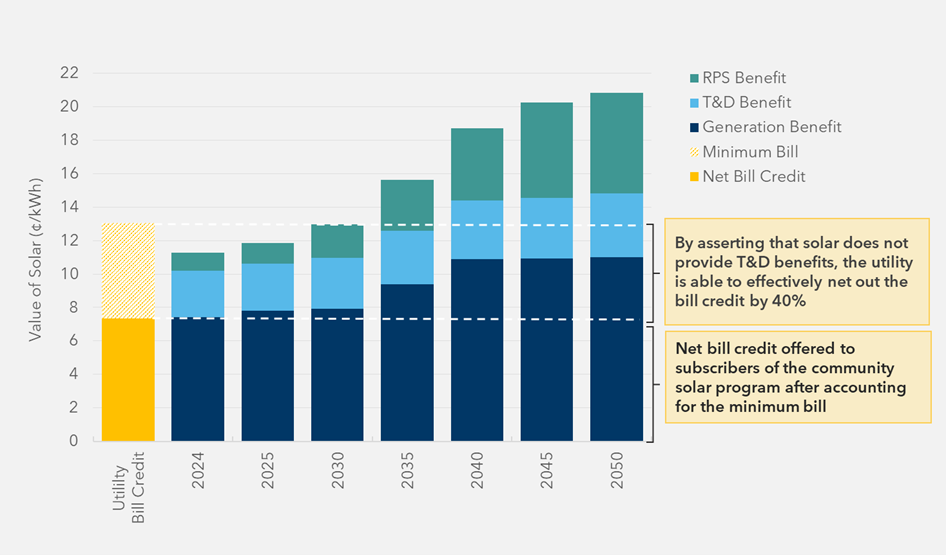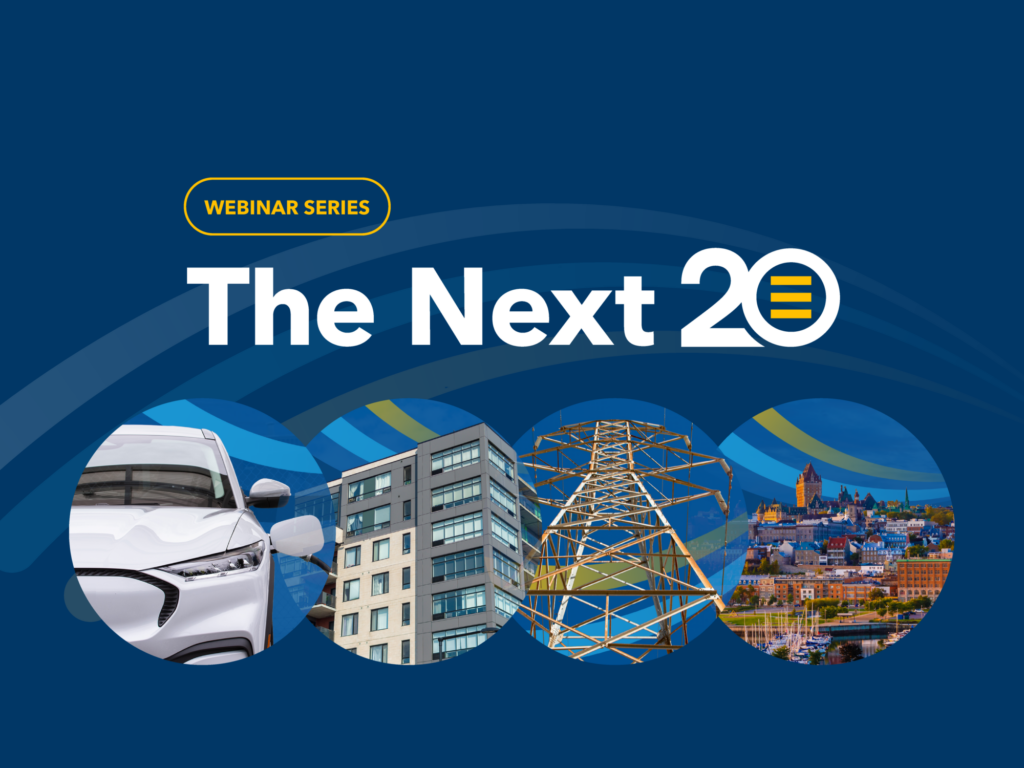Beyond Net Metering: Unlocking win-win scenarios through robust DER valuation frameworks

Introduction
For the past 20 years, Net energy metering (NEM) has been a key contributor to the clean energy transition by supporting the adoption of distributed energy resources (DERs) such as customer-sited solar PV. The simple design of NEM programs – paying customers based on their retail electricity rate – has made them easy to understand and financially attractive for customers.
By Samuel Ross, Director at Dunsky Energy + Climate Advisors and Anirudh Kshemendranath, Senior Consultant at Dunsky Energy + Climate Advisors
For the past 20 years, Net energy metering (NEM) has been a key contributor to the clean energy transition by supporting the adoption of distributed energy resources (DERs) such as customer-sited solar PV. The simple design of NEM programs – paying customers based on their retail electricity rate – has made them easy to understand and financially attractive for customers.
However, as with the overall clean energy transition, the next 20 years for DERs will be more complex than the last, and NEM is increasingly showing its age. For example, the growing adoption of DERs has led to concerns about the impact of NEM on non-participating customers. With participants offsetting a portion of their contribution to fixed utility infrastructure costs, non-participants bear a larger share of those costs.
These concerns around cross-subsidization (as energy economics wonks would call it), have triggered a wave of regulatory efforts – with some ongoing and likely more on the way. Regulators, utilities, customers, and clean energy advocates all recognize the need to compensate DERs fairly for their valuable contributions as building blocks of our evolving grid while simultaneously mitigating these unintended cost-shifts.
Enter VDER Frameworks; a tool increasingly recognized by stakeholders as a potential lever to help achieve that balance, future-proof our rate designs and unlock the significant contributions of DERs to a reliable, affordable and clean grid.
VDER: A Data-Driven Framework That Supports Stakeholder Collaboration and Buy-In

Rather than NEM’s one-size-fits-all solution, VDER offers a data-driven, transparent, and adaptable framework that can be tailored to a jurisdiction’s specific contexts and policy goals. A VDER framework fairly values DERs for the benefits they bring to the grid, ratepayers and society, facilitating development of compensation mechanisms that appropriately incent DERs, align with policy goals, and avoid raising equity concerns. The VDER framework leverages best practices in economic analysis, building on the principles defined in the National Standard Practice Manual, as well as decades of on-the-job experience in the U.S. and Canada. It can also draw insights from increasingly available temporally & geographically granular data enabled through tools like AMI meters, SCADA systems, and feeder-level data to capture the value these resources bring.
Because VDER is based on clear, objective data, it allows regulators, utilities, and industry to engage in transparent, factual, and nuanced discussions about DERs’ value to the grid instead of the more confrontational engagements we sometimes see in net-metering modernization efforts. This, in turn, leads to balanced outcomes that align stakeholder interests with grid modernization efforts.
Common Patterns of Progress Amongst Unique Jurisdictional Contexts
Dunsky has conducted VDER analyses for clients from all sides of the equation, including utilities, regulators, and customer advocacy groups. By working with these clients across jurisdictions as diverse as New Hampshire, Texas, Virginia, British Columbia, and New Brunswick, we have witnessed first-hand how the clarity and objectivity of the VDER framework fosters more productive discussions and ultimately leads to win-win solutions. These solutions typically share three key attributes:
- Fair compensation for DERs based on their value to the electric grid.
- Rate designs based on sound economics and established industry principles minimizing cross subsidization.
- Alignment of DERs with broader policy goals, thereby minimizing conflicts.
Despite the emergence of these common themes, perhaps the most consistent takeaway from VDER studies is, “context is critical”. VDER analyses are inherently nuanced and bespoke; the answer across different jurisdictions is not universal. For example, key attributes of a grid, including expected load growth, current and projected resource mix, peak demand, DER penetration, and system bottle necks (among other things) are key determinants of the value of DERs. Similarly, local policy, regulatory and market environments are key drivers of divergence among jurisdictions.
Example: New Hampshire
Aside from helping to inform future rate design, VDER frameworks also offer an important tool for evaluating the impacts of current NEM structures. For example, in New Hampshire, Dunsky conducted research for the Department of Energy to evaluate the costs and benefits of various DERs, including behind-the-meter solar and solar-plus-storage. Our team applied a VDER framework in NH, using marginal cost principles and benefit-cost best practices to identify that distributed generation could deliver significant system-wide avoided costs and that the current NEM tariffs effectively avoided overcompensation. This ensured solar contributions were accurately valued without placing undue financial burden through cross-subsidization on nonparticipants.

In a PJM jurisdiction, Dunsky analyzed a state’s community solar program, where subscribers receive bill credits but are subject to a minimum bill fee. The study highlighted that this fee overlooked the actual avoided cost benefits that community solar offers to the electric grid. By adjusting compensation to better reflect these benefits, our analysis demonstrated that increasing bill credits would not only enhance fairness but also stimulate program growth, benefiting all ratepayers by helping to address the state’s energy and capacity challenges.

Looking Ahead: A Key (but Singular) Piece of the Puzzle
Net metering – and any successor tariffs – are just one strand in complex, multithreaded efforts to achieve a wide range of energy system goals. VDER analyses can inform, and be informed by, related decisions and programs. Similarly, proper alignment between rate design and other tools – such as Non-Wires Solutions (NWS) procurement or Clean Heat Standards (CHS) – will be critical to ensure that these efforts are integrated as part of a coherent and effective DER enablement strategy.
Our first-hand experience developing DER valuation frameworks with stakeholders shows that the complexities of the maturing clean energy transition increasingly outmuscle the simple solutions of the past. Fortunately, new tools like VDER can help us find win-win solutions for net metering modernization that work for customers, utilities, and advocates alike.
If you wish to learn more about VDER Frameworks, contact a member of our team at info@dunsky.com.
This article originally appeared in Utility Dive.
Related News
- Read more about Understanding Science-Based Targets initiative (SBTi) and Its Implications for Your Business
Understanding Science-Based Targets initiative (SBTi) and Its Implications for Your Business
January 28, 2025
The following article explains the Science-Based Targets initiative (SBTi) and highlights how companies can use this framework to attract investors and talent, as well as manage risk.

- Read more about Webinar Series: The Next 20 Years of the Energy Transition
Webinar Series: The Next 20 Years of the Energy Transition
January 9, 2025
As Dunsky Energy + Climate Advisors celebrates our 20th anniversary, we are excited to host The Next 20 Years of the…

- Read more about Dunsky Welcomes Clean Energy Financing and Program Expert Janice Ashworth
Dunsky Welcomes Clean Energy Financing and Program Expert Janice Ashworth
November 28, 2024
Dunsky Energy + Climate Advisors is excited to welcome Janice Ashworth to our team. With over 20 years of experience…
